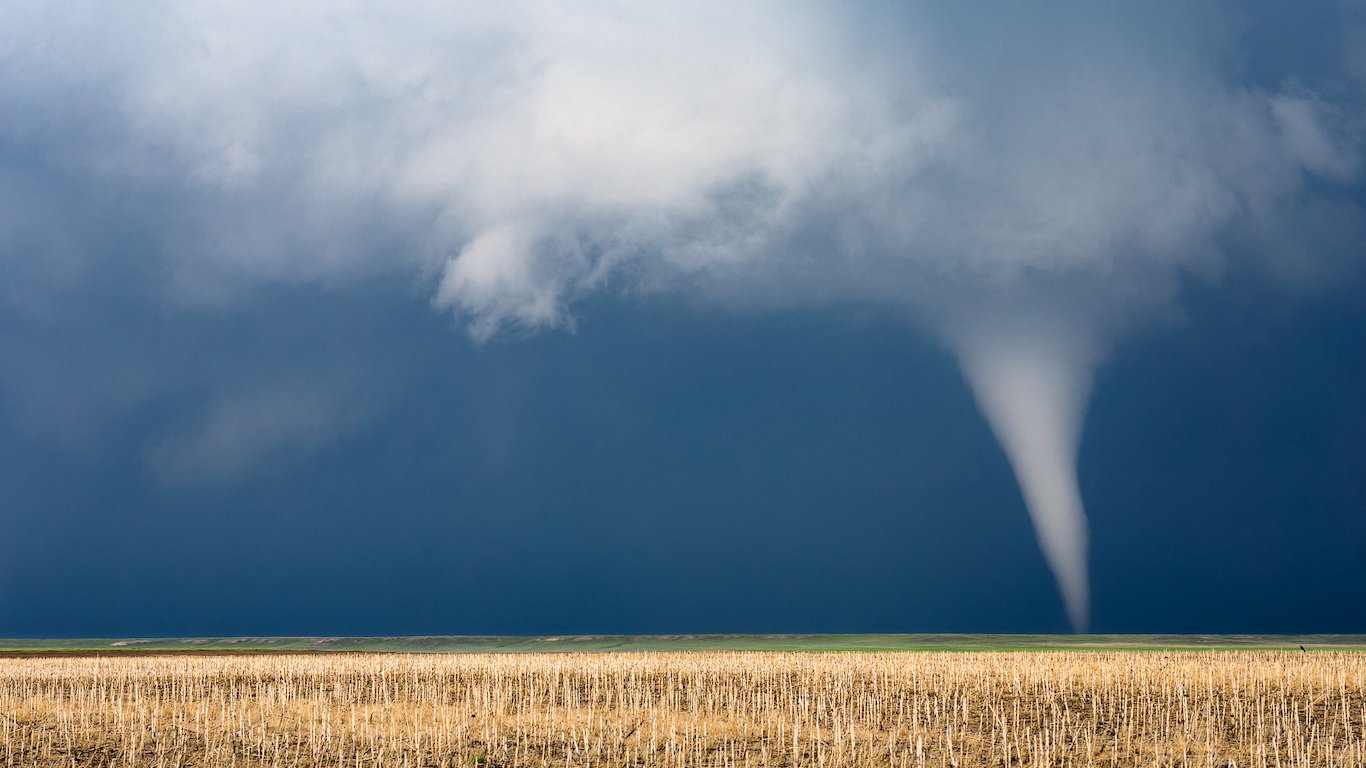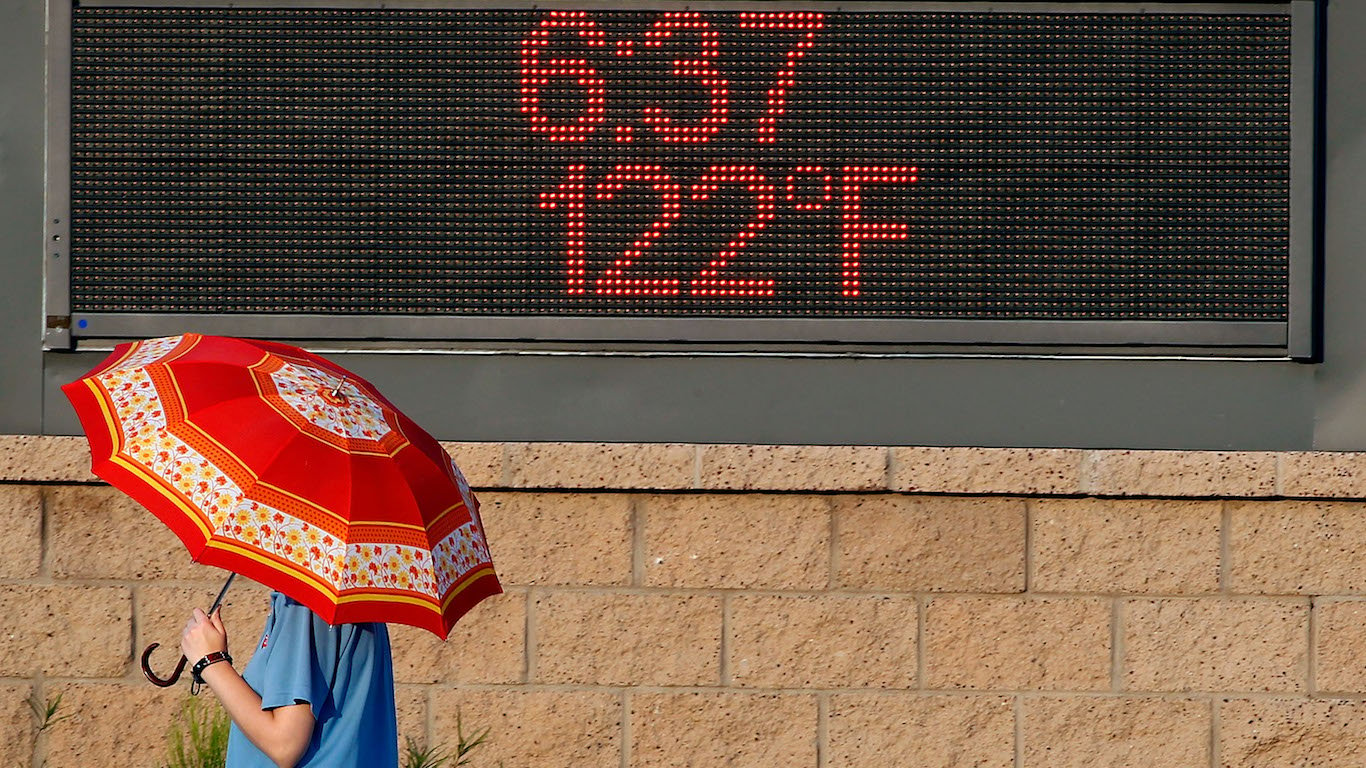

The torrid summer of 2023 is drawing to a close, and according to the European Union-funded Copernicus Climate Change Service, the planet had its hottest three months ever. It was the hottest August on record (global mean surface air temperature), and the second-hottest month ever after July 2023. (Here are the hottest inhabited places on Earth.)
To identify the hottest summers on Earth over the last 50 years, 24/7 Wall st. reviewed data on the average temperature in August for each year between 1940 and Aug. 31, 2023 from the Copernicus Climate Change Service. The anomaly — the degree by which each average temperature in August differs from historically normal temperatures between 1991 and 2020 — also came from the Copernicus Climate Change Service.
The June-to-August season for 2023 was the warmest on record worldwide, with an average temperature of 16.77°C (62.1 Fahrenheit), 0.66°C above average. The hottest 10 summers have all occurred over the past 10 years.
The Copernicus group said August is estimated to have been around 1.5°C warmer than the pre-industrial average for 1850-1900. The 1.5°C mark is considered a critical threshold and once crossed, the effects of climate change are expected to become more severe. August recorded the highest global monthly average sea-surface temperatures of 20.98°C, or 69.7 Fahrenheit. The period from January to August 2023 is the second warmest on record after 2016, when a warming El Niño event occurred.
“What we are observing, not only new extremes but the persistence of these record-breaking conditions, and the impacts these have on both people and planet, are a clear consequence of the warming of the climate system,” said Carlo Buontempo, director of the Copernicus Climate Change Service, European Centre for Medium-Range Weather Forecasts, in a statement. (These are the 25 worst cities to live as global warming gets worse.)
In the United States, more than 6,500 daily heat records have so far broken during the scorching summer. As of Sept. 6, Phoenix had 52 days of highs of 110 degrees or above. Cities such as Houston; Chicago; Lincoln, Nebraska; Wichita, Kansas; New Orleans; Denver; and Portland, Oregon, to name a few, all reported daily heat records.
Click here to see the hottest boreal summers over the last 50 years.

1974
> Avg temp in August: 59.8°F – #75 highest on 1940-2023 record
> Size of anomaly: -1.2°F from 1991-2020 normal – #29 coldest difference
[in-text-ad]

1975
> Avg temp in August: 59.6°F – #81 highest on 1940-2023 record
> Size of anomaly: -1.4°F from 1991-2020 normal – #31 coldest difference

1976
> Avg temp in August: 59.7°F – #78 highest on 1940-2023 record
> Size of anomaly: -1.3°F from 1991-2020 normal – #30 coldest difference

1977
> Avg temp in August: 60.2°F – #41 highest on 1940-2023 record
> Size of anomaly: -0.8°F from 1991-2020 normal – #22 coldest difference
[in-text-ad-2]

1978
> Avg temp in August: 59.9°F – #69 highest on 1940-2023 record
> Size of anomaly: -1.1°F from 1991-2020 normal – #28 coldest difference

1979
> Avg temp in August: 60.2°F – #45 highest on 1940-2023 record
> Size of anomaly: -0.8°F from 1991-2020 normal – #25 coldest difference
[in-text-ad]

1980
> Avg temp in August: 60.5°F – #35 highest on 1940-2023 record
> Size of anomaly: -0.5°F from 1991-2020 normal – #16 coldest difference

1981
> Avg temp in August: 60.6°F – #34 highest on 1940-2023 record
> Size of anomaly: -0.4°F from 1991-2020 normal – #15 coldest difference
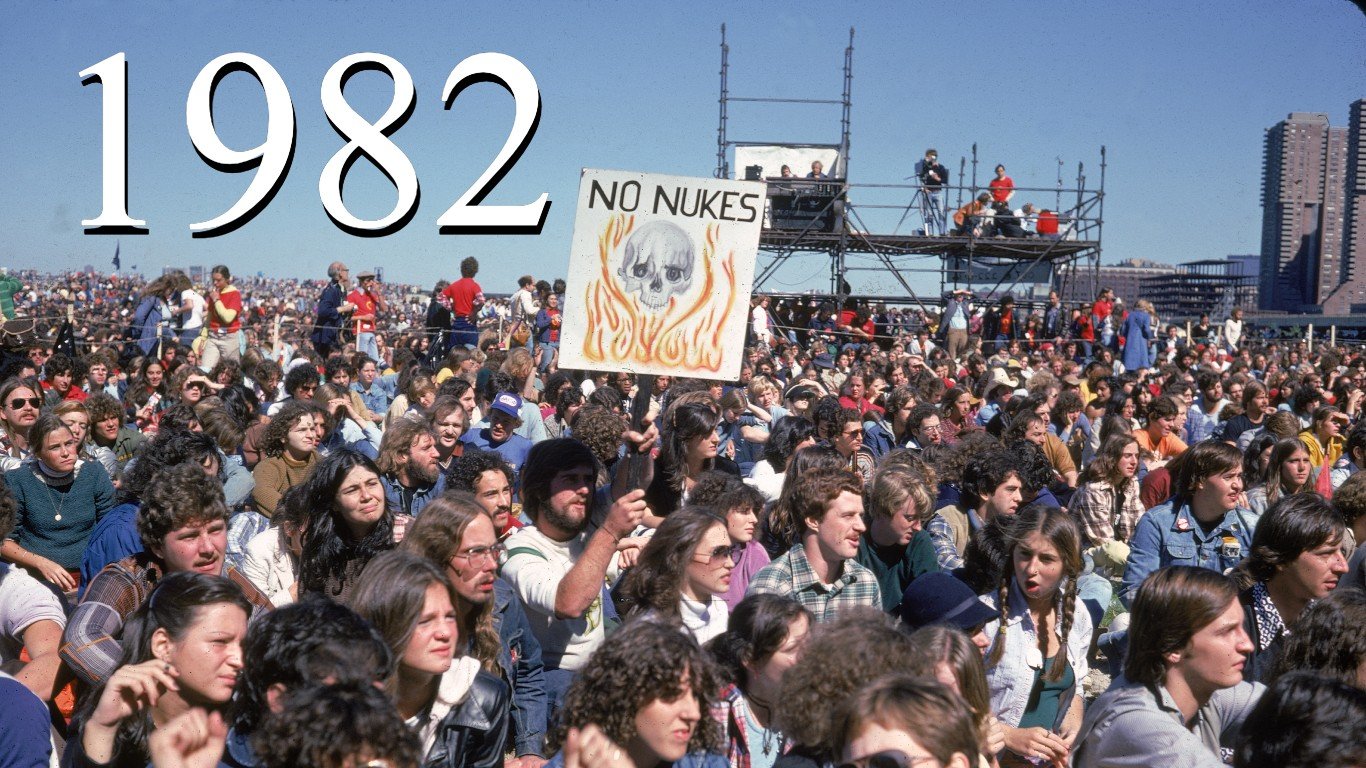
1982
> Avg temp in August: 60.3°F – #40 highest on 1940-2023 record
> Size of anomaly: -0.7°F from 1991-2020 normal – #21 coldest difference
[in-text-ad-2]

1983
> Avg temp in August: 60.5°F – #36 highest on 1940-2023 record
> Size of anomaly: -0.5°F from 1991-2020 normal – #17 coldest difference

1984
> Avg temp in August: 60.1°F – #48 highest on 1940-2023 record
> Size of anomaly: -0.9°F from 1991-2020 normal – #27 coldest difference
[in-text-ad]

1985
> Avg temp in August: 60.2°F – #47 highest on 1940-2023 record
> Size of anomaly: -0.8°F from 1991-2020 normal – #26 coldest difference

1986
> Avg temp in August: 60.2°F – #45 highest on 1940-2023 record
> Size of anomaly: -0.8°F from 1991-2020 normal – #24 coldest difference

1987
> Avg temp in August: 60.7°F – #29 highest on 1940-2023 record
> Size of anomaly: -0.3°F from 1991-2020 normal – #10 coldest difference
[in-text-ad-2]

1988
> Avg temp in August: 60.7°F – #28 highest on 1940-2023 record
> Size of anomaly: -0.3°F from 1991-2020 normal – #9 coldest difference

1989
> Avg temp in August: 60.4°F – #38 highest on 1940-2023 record
> Size of anomaly: -0.6°F from 1991-2020 normal – #19 coldest difference
[in-text-ad]

1990
> Avg temp in August: 60.7°F – #27 highest on 1940-2023 record
> Size of anomaly: -0.3°F from 1991-2020 normal – #8 coldest difference

1991
> Avg temp in August: 60.9°F – #21 highest on 1940-2023 record
> Size of anomaly: -0.1°F from 1991-2020 normal – #3 coldest difference

1992
> Avg temp in August: 60.2°F – #41 highest on 1940-2023 record
> Size of anomaly: -0.8°F from 1991-2020 normal – #22 coldest difference
[in-text-ad-2]

1993
> Avg temp in August: 60.4°F – #39 highest on 1940-2023 record
> Size of anomaly: -0.6°F from 1991-2020 normal – #20 coldest difference

1994
> Avg temp in August: 60.4°F – #37 highest on 1940-2023 record
> Size of anomaly: -0.6°F from 1991-2020 normal – #18 coldest difference
[in-text-ad]

1995
> Avg temp in August: 60.8°F – #24 highest on 1940-2023 record
> Size of anomaly: -0.2°F from 1991-2020 normal – #6 coldest difference

1996
> Avg temp in August: 60.6°F – #31 highest on 1940-2023 record
> Size of anomaly: -0.4°F from 1991-2020 normal – #12 coldest difference

1997
> Avg temp in August: 60.8°F – #26 highest on 1940-2023 record
> Size of anomaly: -0.2°F from 1991-2020 normal – #7 coldest difference
[in-text-ad-2]

1998
> Avg temp in August: 61.3°F – #10 highest on 1940-2023 record
> Size of anomaly: 0.3°F from 1991-2020 normal – ##N/A warmest difference

1999
> Avg temp in August: 60.6°F – #32 highest on 1940-2023 record
> Size of anomaly: -0.4°F from 1991-2020 normal – #13 coldest difference
[in-text-ad]

2000
> Avg temp in August: 60.6°F – #32 highest on 1940-2023 record
> Size of anomaly: -0.4°F from 1991-2020 normal – #13 coldest difference

2001
> Avg temp in August: 60.9°F – #23 highest on 1940-2023 record
> Size of anomaly: -0.1°F from 1991-2020 normal – #5 coldest difference

2002
> Avg temp in August: 61.0°F – #19 highest on 1940-2023 record
> Size of anomaly: 0.0°F from 1991-2020 normal – ##N/A warmest difference
[in-text-ad-2]

2003
> Avg temp in August: 60.9°F – #21 highest on 1940-2023 record
> Size of anomaly: -0.1°F from 1991-2020 normal – #3 coldest difference

2004
> Avg temp in August: 60.7°F – #29 highest on 1940-2023 record
> Size of anomaly: -0.3°F from 1991-2020 normal – #10 coldest difference
[in-text-ad]
2005
> Avg temp in August: 61.1°F – #14 highest on 1940-2023 record
> Size of anomaly: 0.1°F from 1991-2020 normal – #13 warmest difference

2006
> Avg temp in August: 61.1°F – #17 highest on 1940-2023 record
> Size of anomaly: 0.1°F from 1991-2020 normal – #16 warmest difference

2007
> Avg temp in August: 61.0°F – #20 highest on 1940-2023 record
> Size of anomaly: 0.0°F from 1991-2020 normal – ##N/A coldest difference
[in-text-ad-2]

2008
> Avg temp in August: 60.8°F – #24 highest on 1940-2023 record
> Size of anomaly: -0.2°F from 1991-2020 normal – #6 coldest difference

2009
> Avg temp in August: 61.1°F – #14 highest on 1940-2023 record
> Size of anomaly: 0.1°F from 1991-2020 normal – #13 warmest difference
[in-text-ad]

2010
> Avg temp in August: 61.1°F – #14 highest on 1940-2023 record
> Size of anomaly: 0.1°F from 1991-2020 normal – #13 warmest difference

2011
> Avg temp in August: 61.2°F – #11 highest on 1940-2023 record
> Size of anomaly: 0.2°F from 1991-2020 normal – #10 warmest difference

2012
> Avg temp in August: 61.1°F – #13 highest on 1940-2023 record
> Size of anomaly: 0.1°F from 1991-2020 normal – #12 warmest difference
[in-text-ad-2]

2013
> Avg temp in August: 61.1°F – #18 highest on 1940-2023 record
> Size of anomaly: 0.1°F from 1991-2020 normal – #17 warmest difference

2014
> Avg temp in August: 61.2°F – #11 highest on 1940-2023 record
> Size of anomaly: 0.2°F from 1991-2020 normal – #10 warmest difference
[in-text-ad]
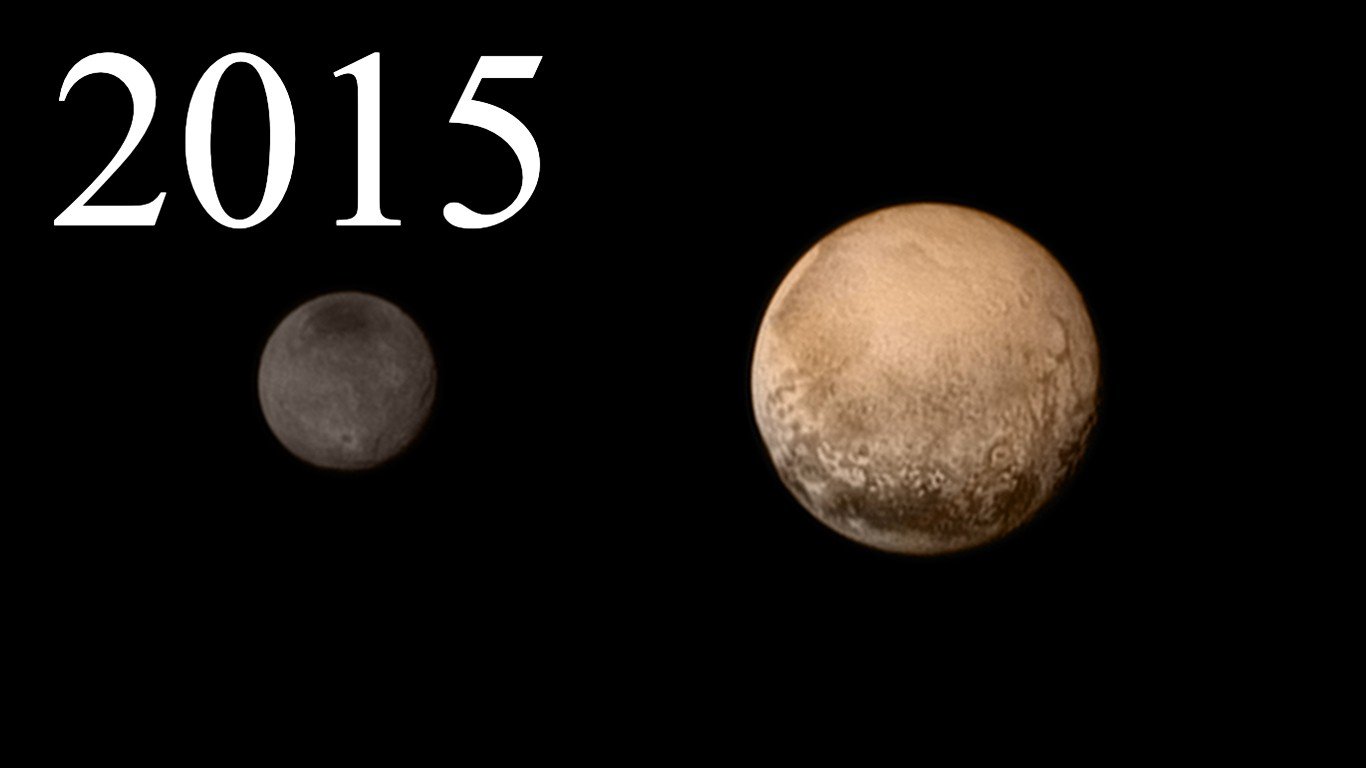
2015
> Avg temp in August: 61.3°F – #9 highest on 1940-2023 record
> Size of anomaly: 0.3°F from 1991-2020 normal – #9 warmest difference

2016
> Avg temp in August: 61.6°F – #3 highest on 1940-2023 record
> Size of anomaly: 0.6°F from 1991-2020 normal – #3 warmest difference
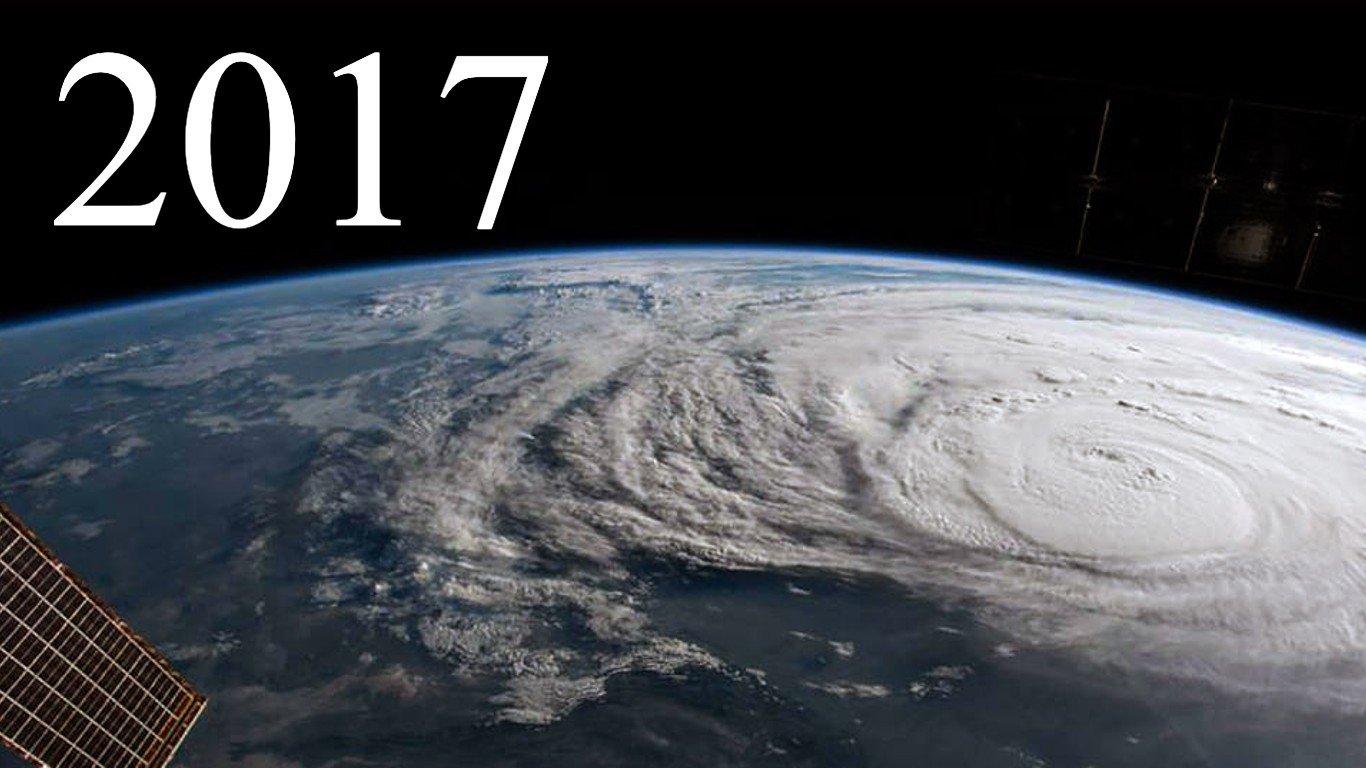
2017
> Avg temp in August: 61.4°F – #7 highest on 1940-2023 record
> Size of anomaly: 0.4°F from 1991-2020 normal – #7 warmest difference
[in-text-ad-2]

2018
> Avg temp in August: 61.4°F – #8 highest on 1940-2023 record
> Size of anomaly: 0.4°F from 1991-2020 normal – #8 warmest difference

2019
> Avg temp in August: 61.7°F – #2 highest on 1940-2023 record
> Size of anomaly: 0.7°F from 1991-2020 normal – #2 warmest difference
[in-text-ad]

2020
> Avg temp in August: 61.6°F – #5 highest on 1940-2023 record
> Size of anomaly: 0.6°F from 1991-2020 normal – #5 warmest difference

2021
> Avg temp in August: 61.5°F – #6 highest on 1940-2023 record
> Size of anomaly: 0.5°F from 1991-2020 normal – #6 warmest difference

2022
> Avg temp in August: 61.6°F – #4 highest on 1940-2023 record
> Size of anomaly: 0.6°F from 1991-2020 normal – #4 warmest difference
[in-text-ad-2]
2023
> Avg temp in August: 62.2°F – #1 highest on 1940-2023 record
> Size of anomaly: 1.2°F from 1991-2020 normal – #1 warmest difference
Sponsored: Attention Savvy Investors: Speak to 3 Financial Experts – FREE
Ever wanted an extra set of eyes on an investment you’re considering? Now you can speak with up to 3 financial experts in your area for FREE. By simply
clicking here you can begin to match with financial professionals who can help guide you through the financial decisions you’re making. And the best part? The first conversation with them is free.
Click here to match with up to 3 financial pros who would be excited to help you make financial decisions.
Thank you for reading! Have some feedback for us?
Contact the 24/7 Wall St. editorial team.
 24/7 Wall St.
24/7 Wall St. 24/7 Wall St.
24/7 Wall St.
 24/7 Wall St.
24/7 Wall St.
